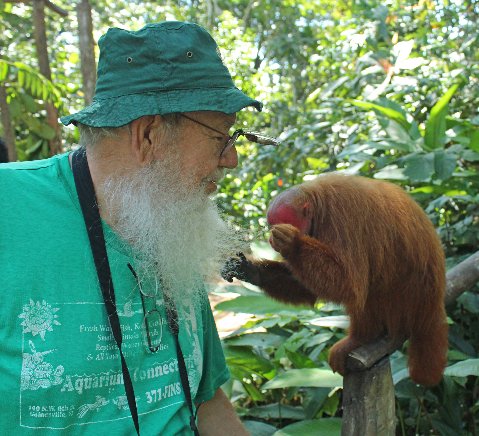"Hey, Dick, here's a gopher!"
"Gopher tortoise, gopher frog, or pocket gopher?"
"Gopher tortoise--and it's a baby."

It was early August and Jake and I were on a jaunt hoping to find a photogenic pale-throated anole (a green anole with a gray rather than a red dewlap). So far we had failed, but during our search we found several other interesting herps that ranged from six-lined racerunners to fence and scrub lizards. We were actually in terrain that was well-populated by gopher tortoises,
Gopherus polyphemus, so seeing one would not be too much of a surprise. But seeing a juvenile is not an everyday or every gopher colony occurrence.
"I'm on my way, Jake. Is it still visible."
"Yep. It's just sitting here eating."
And even after my delay as I wound my way through the prickly pear and cat's claw, the little tortoise, mostly hidden by grasses and brush, was still busily foraging.
With that single sighting what had until then been a very mediocre day suddenly became memorable.
Hatchling gopher tortoises are brightly colored.

Once past the hatchling stage gopher tortoises darken quickly.

 Author, photographer, and columnist Richard Bartlett is one of the most prolific writers on herpetological subjects in the 20th century. With hundreds of books and articles to their credit, Richard and his wife Pat have spent over four decades documenting reptiles both in the field and in captivity. For a list of their current titles, please visit their page in our bookstore. Author, photographer, and columnist Richard Bartlett is one of the most prolific writers on herpetological subjects in the 20th century. With hundreds of books and articles to their credit, Richard and his wife Pat have spent over four decades documenting reptiles both in the field and in captivity. For a list of their current titles, please visit their page in our bookstore. |




To prevent automated Bots from commentspamming, please enter the string you see in the image below in the appropriate input box. Your comment will only be submitted if the strings match. Please ensure that your browser supports and accepts cookies, or your comment cannot be verified correctly.